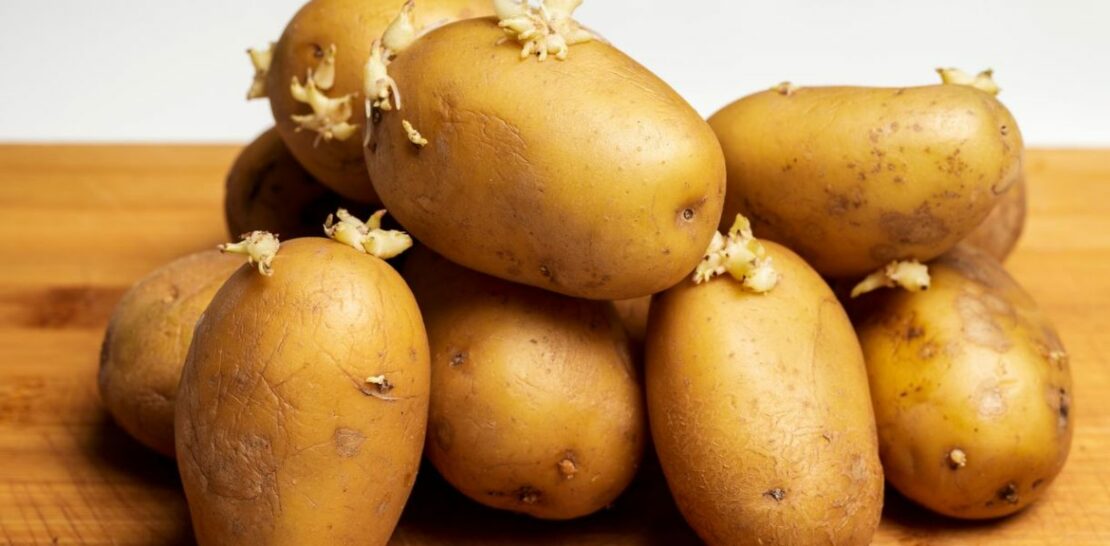When it comes to sprouted potatoes, there’s a common debate among homemakers, chefs, and food enthusiasts alike: can you eat them?
In this exhaustive examination of the subject, we’ll explore the safety and nutritional aspects of consuming sprouted potatoes, delving into the science behind sprouting, potential health risks, and ways to safely prepare and enjoy these often misunderstood tubers.
By the end of this article, you’ll be equipped with a wealth of knowledge to make an informed decision on whether or not to partake in these controversial spuds.
Understanding the Science of Sprouting Potatoes
Before we can address the question of consumption, it’s essential to gain insight into the natural process of sprouting and its effects on the humble potato.
Sprouting, also known as germination, is the process through which a plant emerges from its seed or, in the case of a potato, its eye. This eye is essentially a dormant bud that, when given the right conditions – warmth, moisture, and time – will begin to grow into a new plant. Potatoes are tubers, which means that they store energy and nutrients for the plant’s growth, making them the perfect environment for sprouting.
During the sprouting process, a potato undergoes several chemical changes. One of the primary transformations is the conversion of stored starch into sugars, which serve as fuel for the developing sprout. This conversion results in a softer, sweeter potato that may have a slightly different taste and texture than a non-sprouted one. Additionally, as the sprout grows, it draws nutrients from the potato, which can lead to a decrease in overall nutritional value.
Potential Health Risks of Eating Sprouted Potatoes
Now that we’ve explored the science behind sprouting potatoes, it’s crucial to address the potential health risks associated with consuming them. The primary concern in this regard is the presence of glycoalkaloids, specifically solanine and chaconine.
- Glycoalkaloids are naturally occurring compounds found in the nightshade family of plants, which includes potatoes. They act as a plant’s defense mechanism against pests and diseases. While present in small amounts in all potatoes, their concentration can increase significantly during sprouting. These compounds can be toxic if ingested in large quantities, leading to symptoms such as nausea, vomiting, diarrhea, and in severe cases, neurological issues and even death.
- Solanine is the primary glycoalkaloid of concern in potatoes. It is found primarily in the skin, eyes, and sprouts of the tuber. Solanine can be toxic, even in small amounts, and has been linked to gastrointestinal issues and neurological disturbances.
- Chaconine is another glycoalkaloid found in potatoes, though its toxicity is generally less severe than solanine. However, it can still contribute to the overall glycoalkaloid content of a potato and increase the likelihood of adverse effects when consumed.
It’s important to note that cases of glycoalkaloid poisoning from potatoes are relatively rare, and the majority of incidents result from ingesting green or spoiled potatoes. However, the potential risks should not be ignored, especially when dealing with sprouted potatoes.
Evaluating the Safety of Sprouted Potatoes
Given the potential health risks, it might seem like a simple answer to avoid sprouted potatoes altogether. However, there are several factors to consider when determining their safety for consumption.
- Appearance: Inspect the potato closely for any signs of spoilage or mold. Additionally, pay attention to the color of the skin and flesh. Green-tinged potatoes contain higher levels of glycoalkaloids and should be avoided.
- Sprout size: Smaller sprouts are generally less concerning than larger, more developed ones. If the sprouts are minimal and the potato is otherwise in good condition, it may still be safe to consume after removing the sprouts and eyes.
- Age and storage conditions: Potatoes that have been stored for an extended period or in inappropriate conditions, such as in direct sunlight or at high temperatures, are more likely to have increased glycoalkaloid levels. When in doubt, it’s best to discard sprouted potatoesthat have not been stored properly.
- Individual sensitivity: Some people may be more susceptible to the effects of glycoalkaloids than others. If you have a history of sensitivity or allergic reactions to potatoes or other nightshade plants, it’s advisable to avoid sprouted potatoes altogether.
Ultimately, the decision to consume a sprouted potato should be made on a case-by-case basis, taking into account the factors listed above. When in doubt, it’s best to err on the side of caution and discard any questionable potatoes.
Preparation and Cooking Tips for Safe Consumption
If you’ve determined that your sprouted potato is safe to eat, there are several precautions you can take during preparation and cooking to minimize the potential risks and ensure a tasty, nutritious meal.
First and foremost, it’s essential to remove all sprouts, eyes, and any green areas from the potato before cooking. These parts contain the highest concentrations of glycoalkaloids and should not be consumed. Use a small knife or the tip of a vegetable peeler to carefully cut away these areas, ensuring that you remove as much of the affected tissue as possible.
Next, consider the cooking method. Studies have shown that boiling potatoes can help to reduce their glycoalkaloid content, as these compounds are water-soluble and can leach into the cooking water. If you choose to boil your sprouted potatoes, be sure to discard the cooking water after use. Other methods, such as baking, roasting, or frying, may not be as effective at reducing glycoalkaloid levels, though they can still be utilized if proper care is taken to remove all sprouts, eyes, and green areas beforehand.
Finally, be mindful of portion sizes. Consuming a small amount of sprouted potato is unlikely to cause harm, but it’s best to avoid making them the star of your meal. Instead, consider incorporating them into dishes with other ingredients, such as soups, stews, or casseroles, to dilute the potential risks and still enjoy their unique flavor and texture.
In conclusion, the answer to the question of whether or not sprouted potatoes can be eaten is not a simple yes or no. It requires an understanding of the science behind sprouting, an assessment of the potential health risks associated with glycoalkaloids, and careful consideration of the factors that determine the safety of individual potatoes. By taking the proper precautions during storage, evaluation, and preparation, it’s possible to enjoy sprouted potatoes as part of a balanced and varied diet. However, always remember to trust your instincts and prioritize your health – if you’re ever unsure about a potato’s safety, it’s best to leave it off the menu.




